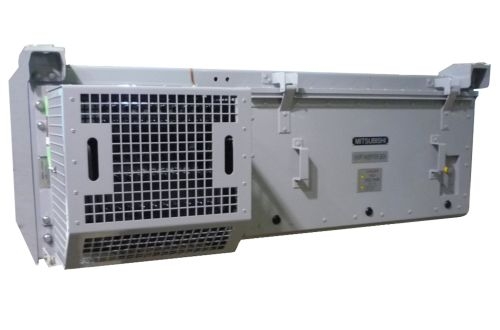The all-SiC inverter is designed to reduce power loss, size and weight compared with conventional insulated gate bipolar transistor (IGBT) power modules and hybrid power modules made with Si transistors and SiC diodes. The new all-SiC power modules are expected to help reduce power consumption and cut the size and weight of equipment used in high-power trains such as those operating on the Shinkansen network.
Mitsubishi Electric says the switching loss is about 55% less than that of one of its conventional inverters incorporating IGBT power modules. The new system is also to regenerate more energy as it can make use of regenerative brakes in all speed ranges. Total energy consumption of onboard systems, including motors, is cut by about 30% compared with conventional systems. Size and weight are reduced by about 65% compared with conventional inverter systems with IGBT power modules and by around 30% compared with existing hybrid inverter systems with SiC diodes. The number of components is reduced by integrating SiC transistors and diodes into one package per inverter circuit phase.
Overall energy saving can be reduced further by transferring regenerated electric power from the trains to stations when they have been equipped with station energy-saving inverters (S-EIV).
The main circuit of new traction inverter system comprises a two-level PWM inverter with regenerative brakes. There are four 180kW self-cooled traction motors with parallel control.
The dielectric strength voltage of SiC is about 10 times greater than that of Si, and SiC devices can operate at higher temperatures than Si devices because of the high breakdown voltage and low conduction loss of thinner semiconductors.
"Unlike the continuing development of SiC diodes, development of SiC transistors has proven difficult due to problems with crystal preparation, which requires highly advanced insulation and package technologies capable of withstanding high temperatures," says Mitsubishi Electric.
Development of SiC power modules has been partially supported by Japan's New Energy and Industrial Technology Development Organisation (Nedo).
In October 2011, Mitsubishi Electric produced a traction inverter for 600V and 750V dc electrification incorporating the first large-capacity hybrid SiC power modules. With help from Tokyo Metro, the system was field-tested on trains operating in revenue service on the Ginza Line, where Mitsubishi Electric says it reduced energy consumption by 38.6% compared with the conventional inverters in other trains operating on the same line.

